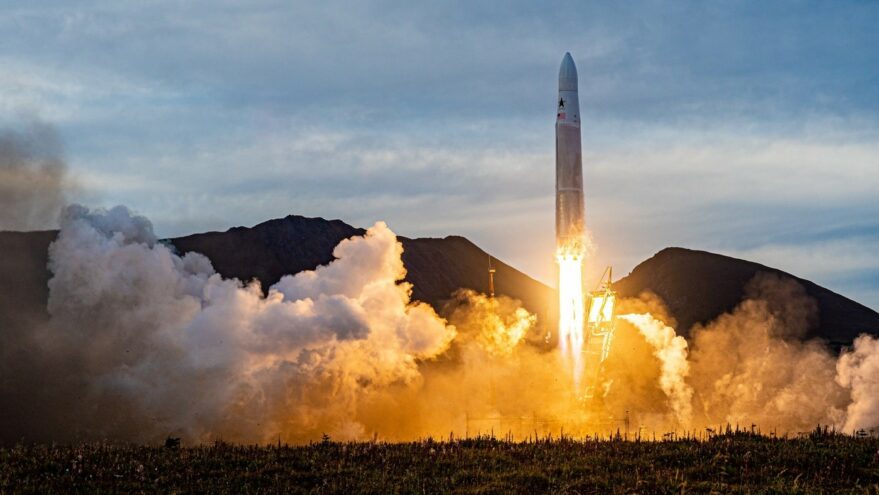1) Venus to receive two new missions by 2030.
Both DAVINCI+ and VERITAS were competing in a pool of four proposals under NASA’s program of low-budget ($500 million) Discovery-class missions. NASA had said it would approve up to two proposals, and one Venus mission was widely expected to make the cut. But NASA's decision to double down on Venus came as a surprise.
“Everyone hoped that one of the two slots would be a Venus mission,” says Justin Filiberto, who is a member of the DAVINCI+ team and a geochemist at the Lunar and Planetary Institute in Houston. “But this is incredible because it makes a mini Venus exploration program.”
Part of what makes scientists so excited is that the capabilities of the two spacecraft are highly complementary. “We have such different spatial resolution of our datasets,” says Filiberto. “DAVINCI+ is going to be able to see these ancient rocks in higher resolution than VERITAS, but VERITAS is going to have global coverage, so they’re going to able to put our pinpoint into context.”
Some more about Venus
2) Unidentified aerial phenomena' report from the PANTAGON
You've probably seen footage of a few such encounters, thanks to Christopher Mellon, who served as deputy assistant secretary of defense for intelligence under President Bill Clinton and President George W. Bush.
In 2017, after he had left his position with the U.S. government, Mellon gave three recently declassified Navy UFO videos to the New York Times, the CBS news program "60 Minutes" reported on Sunday (May 17). The Times then published a blockbuster story about the videos and the Advanced Aerospace Threat Identification Program (AATIP), a Pentagon project tasked with investigating such sightings.
Mellon told "60 Minutes" that he took this step because he was concerned that not enough was being done to investigate UFOs, or UAPs ("unidentified aerial phenomena"), as they've been rebranded in U.S. military parlance.
"It's bizarre and unfortunate that someone like myself has to do something like that to get a national security issue like this on the agenda," Mellon told "60 Minutes" reporter Bill Whitaker.
3) New Zealand signs Artemis Accords, which emphasizes care of the space environment.
New Zealand is urging progress on sustainability in space mining as the country becomes the 11th worldwide to sign on to the NASA-led Artemis Accords for human-led moon exploration.
Peter Crabtree, head of the New Zealand Space Agency, signed the pact during a ceremony Monday (May 31) in Wellington, N.Z., according to NASA.
4) Lunar eclipse 2021: Super Blood Moon on May 26, here's all you need to know.
New Delhi: The month of May brings the “most super” of the year’s supermoons and also a total lunar eclipse. On May 26, a lunar eclipse will coincide with the moon's closest approach to Earth — making it a "supermoon" eclipse that will turn the moon reddish — also known as a "blood moon. " When the moon travels around the earth in an elliptical orbit, or an elongated circle, every month, the Moon passes through perigee (the point closest to Earth) and apogee (the point farthest from Earth). When the Moon is at or near its closest point to Earth at the same time as it is full, it is called a “supermoon.” During this event, because the full moon is a little bit closer to us than usual, it appears especially large and bright in the sky. On May 26, the eclipse will start at 4:47:39 a.m. EDT (08:47:39 GMT), according to NASA's Eclipse Page. That's when the moon touches the penumbra. The partial phase of the eclipse starts about 57 minutes later, at 5:44 a.m. EDT, (09:44:57 GMT). The moon enters the total phase of the eclipse at 7:11:25 EDT (11:11:25 GMT) and completes exiting the umbra at 10:52:22 EDT (12:52:22 GMT). The last contact is at 13:49:41. (To convert from GMT to your time zone you can use this converter). Observers were able to see the supermoon throughout the night if the sky is clear.
Like all full moons, the supermoon rises in the east around sunset and sets in the west around sunrise. The total eclipse, or the time when the moon is in deepest shadow, will last for about 15 minutes. If the moon is up in your area while this happens, it will be a treat to watch. The blood moon eclipse will be visible from India but only in the penumbral phase. In Colombo, Sri Lanka for example, the moon rises at 6:23 p.m. local time on May 26, and the penumbral eclipse ends at 7:19 p.m. local time.
5) China’s unmanned spacecraft Tianwen-1 lands successfully on Mars
An uncrewed Chinese spacecraft carrying the country’s first Mars rover landed on the surface of Mars on Saturday (May 15, 2021) as per reports by the China National Space Administration (CNSA).
An uncrewed Chinese spacecraft carrying the country’s first Mars rover landed on the surface of Mars on Saturday (May 15, 2021) as per reports by the China National Space Administration (CNSA).
This touchdown makes China the second space-faring nation after the United States to land on the Red Planet. These uncrewed Chinese spacecraft are known as, Tianwen-1, was launched on July 23, 2020, and carried an orbiter, a lander, and a rover to Mars. The Tianwen-1 spacecraft landed on a site on a vast plain known as Utopia Planitia, "leaving a Chinese footprint on Mars for the first time," state news agency Xinhua said. As per the China National Space Administration, Tianwen-1 left its parked orbit at 1700 GMT on Friday and entered the Martian atmosphere three hours later. The Chinese media reported the landing process as the "nine minutes of terror".Tianwen-1 also contains a solar-powered rover, named Zhurong, which weighs around 240 kilograms, has a high-resolution topography camera, six wheels, and can move up to 200 meters per hour. The Zhurong rover will study the planet’s surface soil and atmosphere while looking for the signs of ancient life using ground-penetrating radar.
6) Astra to acquire spacecraft propulsion company Apollo Fusion
Launch vehicle developer Astra is acquiring Apollo Fusion, a company developing electric propulsion systems for spacecraft, as part of its effort to create vertically integrated space systems.
Astra is purchasing Apollo Fusion for $30 million in stock and $20 million in cash in a deal announced June 7. The deal includes an additional $95 million in earn-out incentives if Apollo Fusion reaches certain technical and revenue milestones.
Astra will incorporate Apollo Fusion’s Apollo Constellation Engine electric propulsion systems in satellite buses the company is developing to provide an integrated solution to customers. Astra revealed its satellite plans in February when it announced it would merge with a special purpose acquisition company (SPAC), Helicity. The companies said the acquisition will close after Astra completes its merger with Helicity later this year.
In an interview, Chris Kemp, chief executive of Astra, said that Apollo Fusion’s thrusters fill a technology gap for those future satellites. “What this is about is adding a really core piece of technology to Astra’s platform,” he said. “It’ll unlock a whole new set of customer opportunities for us.”
“The next puzzle piece is the vertically integrated spacecraft. So, as we started to look at that, what are the core technologies that drive that?” he said. “This engine is one of those key cornerstones of that space platform we’re building.”
Mike Cassidy, chief executive of Apollo Fusion, said customers of both his company’s thrusters and Astra’s rockets were looking for an integrated solution. “A lot of our customers were asking us for the total solution for getting from the ground from the orbit they want to go, and Chris’s customers are asking the same thing,” he said in an interview.
Apollo Fusion, which has sold its Apollo Constellation Engine to several customers, most recently York Space Systems, will continue to market the thruster to other companies. “We are financially motivated to do that part of the deal, and Astra has made very good incentives for us to keep doing that,” Cassidy said.
“Mike has an incredible customer manifest and pipeline, and we want to continue to serve those customers,” Kemp said. “But we’re incorporating what they’re doing into our product as quickly as we can.”
Both companies have emphasized plans for the mass production of their systems. Astra has a goal of performing daily launches as soon as the middle of the decade, while Apollo Fusion has emphasized production partnerships that would allow it to manufacture its thrusters in large quantities.
Cassidy said he expects to leverage Astra’s projected launch cadence to speed up the development and testing of new thrusters. “The way it is now, we have to wait 9 or 12 months to do a test launch,” he said. “But in the future, we’ll be able to do a test launch in two or four months.”
Kemp said he saw a lot of similarities between the two companies, and having known Cassidy for several years, it was clear that a deal made sense. “It’s really like we’re sister companies and their technology was just a big missing piece of our overall platform,” he said.

Astra roadmap
Astra’s acquisition of Apollo Fusion is the latest in a series of developments for the company. It announced May 18 a contract with Planet to perform multiple launches of Planet’s imaging satellites in 2022.
Kemp said in the interview that Astra has more than 50 launches under contract, serving a mix of government and commercial customers, although Planet is the first customer it’s publicly announced. “Planet is probably the pioneer in the small satellite space,” he said. “We couldn’t be more proud to have them as the first customer we could announce.”
Astra also disclosed that it has a roadmap to develop larger vehicles, with the goal of placing up to 500 kilograms into orbit. The company did not disclose technical details of that roadmap or a schedule for producing those larger vehicles.
Kemp said plans for various megaconstellations influenced that roadmap. “We want to converge with what these mega constellation operators are designing and flying in 2023,” he said. “It’s about being the most responsive launch service provider and also being the best way for us to build our own platform.”
He described an iterative process for gradually scaling up the company’s launch vehicles to achieve that 500-kilogram target. “My goal is to have as many iterations as possible, where the engineers can add these things incrementally,” he said, gradually increasing performance instead of making a big jump from 50 to 500 kilograms.
Up next for Astra is beginning commercial launches. Kemp said the company’s next launch, after a December 2020 flight that nearly reached orbit, is scheduled for this summer. Astra expects to begin monthly launches in the fourth quarter.
Thank You for reading!...














0 Comments